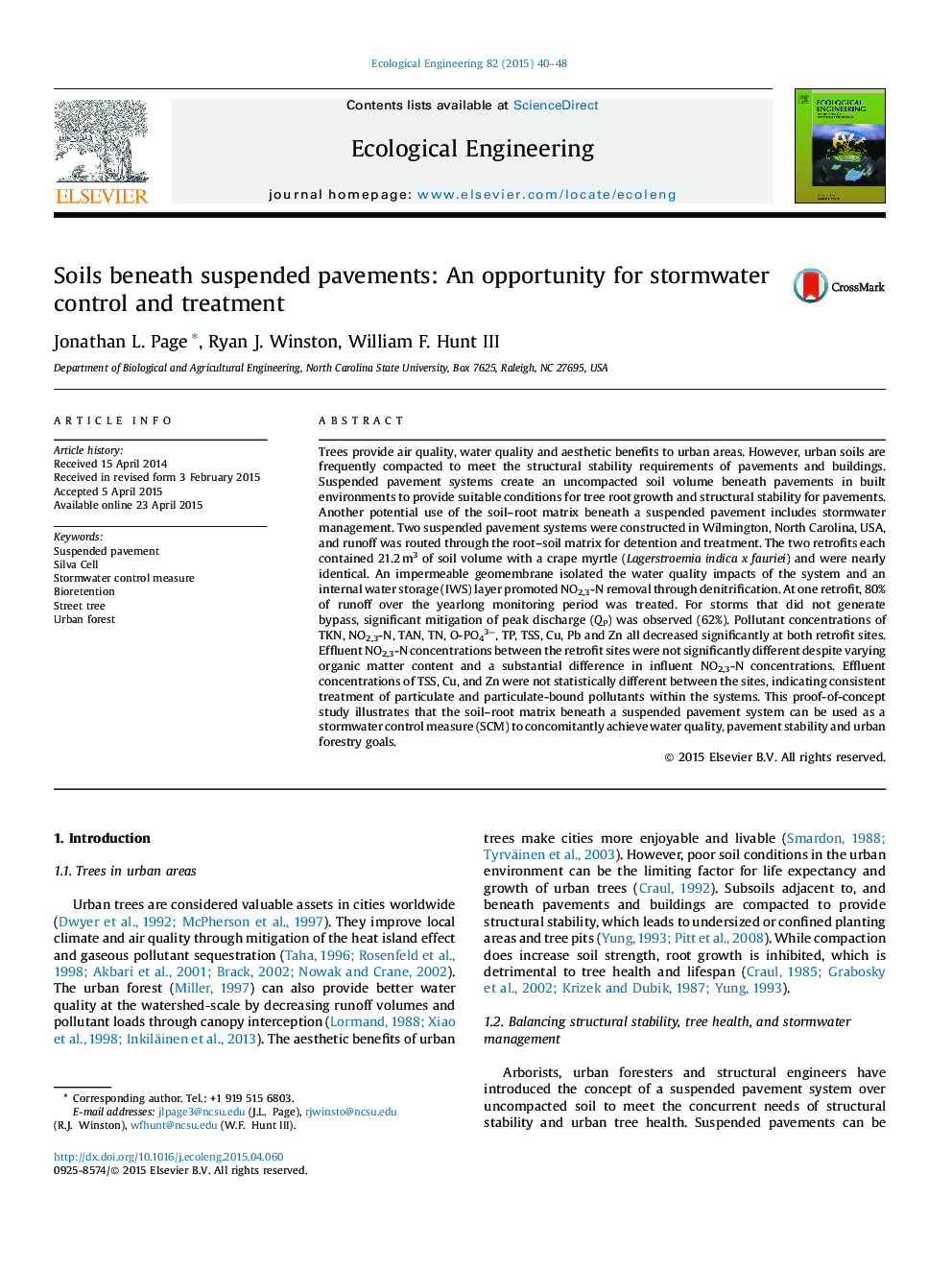| Article ID | Journal | Published Year | Pages | File Type |
|---|---|---|---|---|
| 4388947 | Ecological Engineering | 2015 | 9 Pages |
•Two Silva Cell™ systems were constructed in Wilmington, NC, USA.•Runoff was routed through the root-soil matrix for detention and treatment.•At one retrofit, 80% of runoff was treated by the Silva Cell™ system.•All nutrient, sediment and heavy metals concentrations decreased significantly at both retrofit sites.•The Silva Cell™ system can be used to meet both silviculture and stormwater management goals.
Trees provide air quality, water quality and aesthetic benefits to urban areas. However, urban soils are frequently compacted to meet the structural stability requirements of pavements and buildings. Suspended pavement systems create an uncompacted soil volume beneath pavements in built environments to provide suitable conditions for tree root growth and structural stability for pavements. Another potential use of the soil–root matrix beneath a suspended pavement includes stormwater management. Two suspended pavement systems were constructed in Wilmington, North Carolina, USA, and runoff was routed through the root–soil matrix for detention and treatment. The two retrofits each contained 21.2 m3 of soil volume with a crape myrtle (Lagerstroemia indica x fauriei) and were nearly identical. An impermeable geomembrane isolated the water quality impacts of the system and an internal water storage (IWS) layer promoted NO2,3-N removal through denitrification. At one retrofit, 80% of runoff over the yearlong monitoring period was treated. For storms that did not generate bypass, significant mitigation of peak discharge (QP) was observed (62%). Pollutant concentrations of TKN, NO2,3-N, TAN, TN, O-PO43−, TP, TSS, Cu, Pb and Zn all decreased significantly at both retrofit sites. Effluent NO2,3-N concentrations between the retrofit sites were not significantly different despite varying organic matter content and a substantial difference in influent NO2,3-N concentrations. Effluent concentrations of TSS, Cu, and Zn were not statistically different between the sites, indicating consistent treatment of particulate and particulate-bound pollutants within the systems. This proof-of-concept study illustrates that the soil–root matrix beneath a suspended pavement system can be used as a stormwater control measure (SCM) to concomitantly achieve water quality, pavement stability and urban forestry goals.
